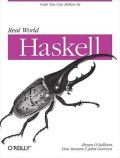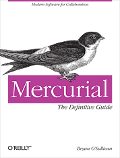Book review: Doug Macdougall, “Frozen Earth”
Some time ago, I read a Nature review (subscription required) of Doug Macdougall’s “Frozen Earth“. As is the way of such things, after I ordered my copy, the book suffered several months of neglect before I finally had a chance to pick it up. However, once I started reading it, I quickly became engrossed, and polished it off in a matter of days.
The book opens with a few chapters on the history of scientific inquiry into climate change. This I consider its only weak part: it follows a formula of the past decade in popular science writing, of sketching the characters involved in the early study of the field. Many of the founders of the field that Macdougall introduces, and the controversies in which they were involved, merit multiple volumes of their own, and so the first few chapters are necessarily skeletal. I found these passages interesting, but not satisfying. The world probably has enough thumbnail sketches of Louis Agassiz at this point.
Once Macdougall leaves behind the early historical narrative, the book kicks into intellectual high gear, and I found the entire rest of the book to be superb. In discussing the Missoula Floods, Macdougall touches on both the evidence for catastrophic flooding and the lengthy controversy that Harlen Bretz’s identification of the source of the Channeled Scablands engendered in the American geological community. This chapter is notable for its discussion of both the astounding physical evidence involved, the research that Bretz and subsequent generations of scientists performed, and how scientific controversy works.
Another notable feature of the book is Macdougall’s discussion of the effects of climate on the development of the human species and human culture, both during early human evolution and through the written records of the past few millenia. Among the surprising topics he touches on is a study of paintings from the Little Ice Age (roughly the 13th through 19th centuries) in which someone noted light levels and counted the number of times in which the sky was represented as clear or overcast, as a proxy for weather conditions of the time.
I appreciated Macdougall’s discussion of the drawing together of data from a variety of sources to try to portray a consistent and continuous picture of climate over time. Since so many of the signals upon which paleoclimatologists rely are either faint, broken up, or distorted, they look for correlations between as many sources of data as possible, and correct for numerous possible errors as they go. Macdougall discusses many of the proxies used, such as isotopic stratigraphy and measurements of many properties of ice cores; why some of the data are unreliable; and how climate scientists identify and correct errors.
Most importantly, Macdougall writes clearly and engagingly throughout the book. He doesn’t shy away from complex topics, but he presents them clearly; he limits his use of jargon, and he remembers to introduce a new term by telling the reader what it means. Once I got over my dubious reaction to the first few chapters, I found the bulk of “Frozen Earth” to be intellectually exhilarating and thoroughly enjoyable.



Leave a Reply